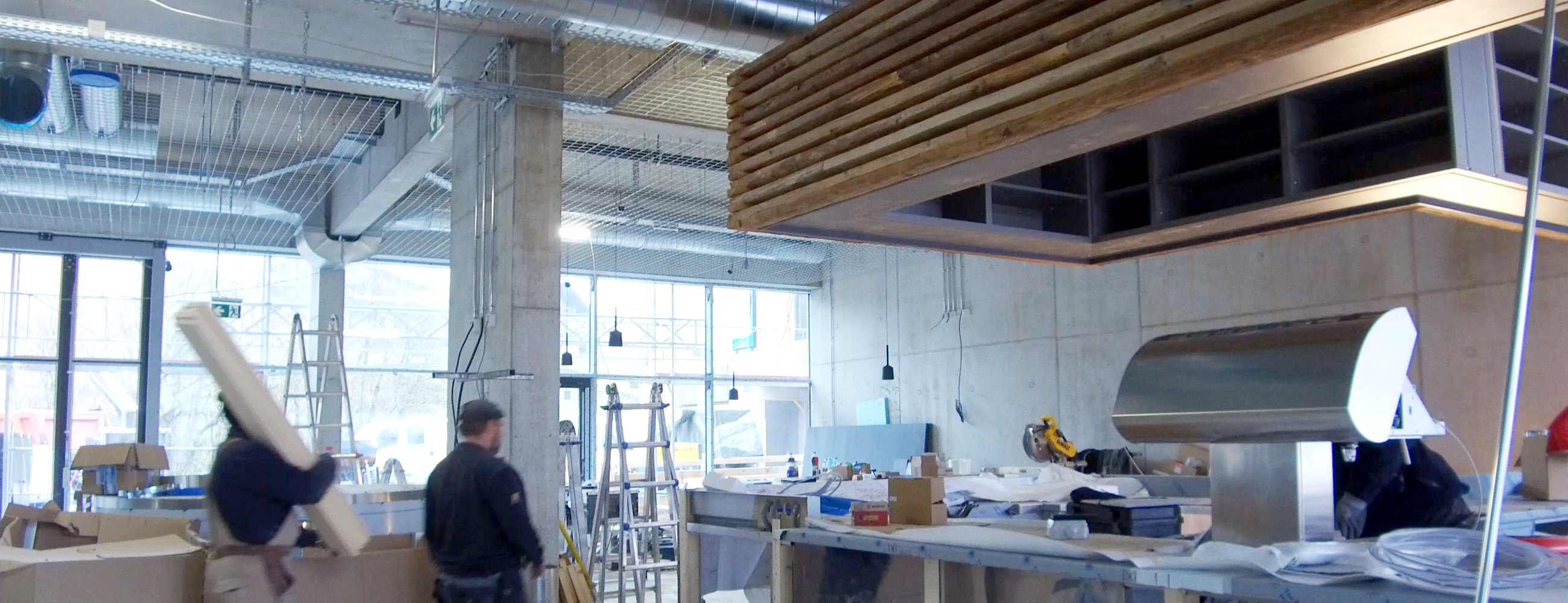


Nature in the Silvretta Alps is very beautiful. This is one of the reasons why so many people take their holidays there. Nonetheless, tourism can threaten the natural landscape; damaging it or even destroying it.
There is a high level of awareness about this in the region, and there are many initiatives committed to preserving nature. Such schemes are involved in sowing indigenous plants, breeding old animal strains, and practising ancient crafts, such as cheese-making or wool-felting. Associations, including ‘bewusstmontafon’, for instance, ensure that knowledge about the rich heritage of the region is passed on to holidaymakers, encouraging them to treat nature with care.
Those of us involved in architectural planning share a particular responsibility to ensure nature is protected. It is up to us to use natural resources wisely and sustainably in our construction projects. Above all, we must (re)learn to address the entire life cycle of the materials we use and to make sure that the cycle from extraction to recycling is taken into account. This can be done successfully where building materials are either renewable or compostable, recyclable or reusable.
It is for this reason that we love wood. Harvested wood grows back, is easy to reuse, and has a positive carbon footprint. For the Silvretta project we chose to use reclaimed wood, in total 2.7 tonnes, for all wooden surfaces. Reusing old wooden planks is not only resource-friendly in particular, but also adds a regional and historical dimension to the fittings made from it. The wood we sourced came from old houses in the region.
To ensure that the design of the wooden fixtures were also rooted locally, we modelled them on typical ‘stacked wood’ Alpine cabins with their ‘interwoven’ corners. In Vorarlberg, buildings are traditionally constructed either with closed outer walls (using timber layers and scarf joints), or employing an open construction method, in which the timber layers are laid using few or no scarf joints at all. Since our fittings were all located in a protected interior, we opted for an open construction method, such as was used in the open air for stables, for example.

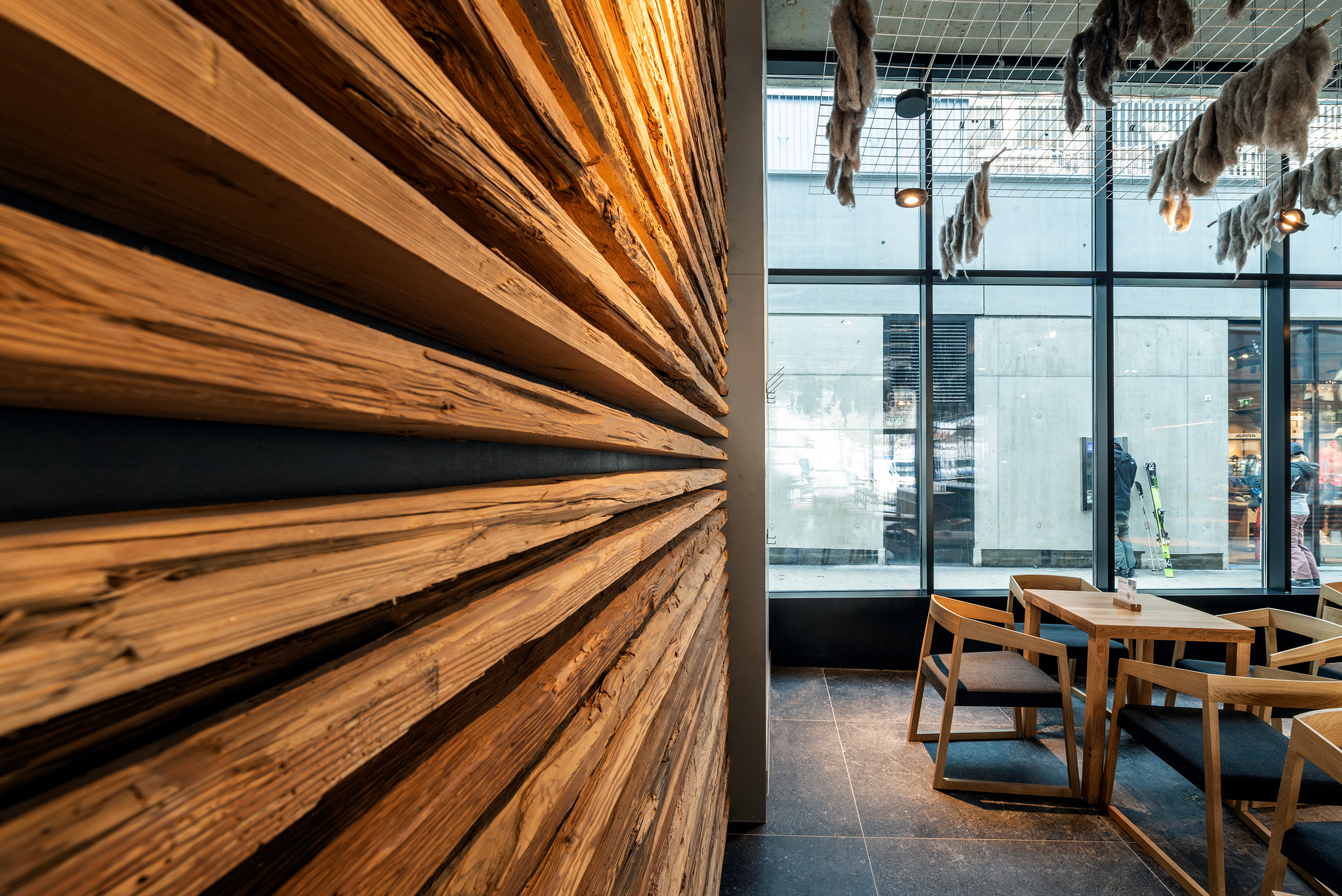
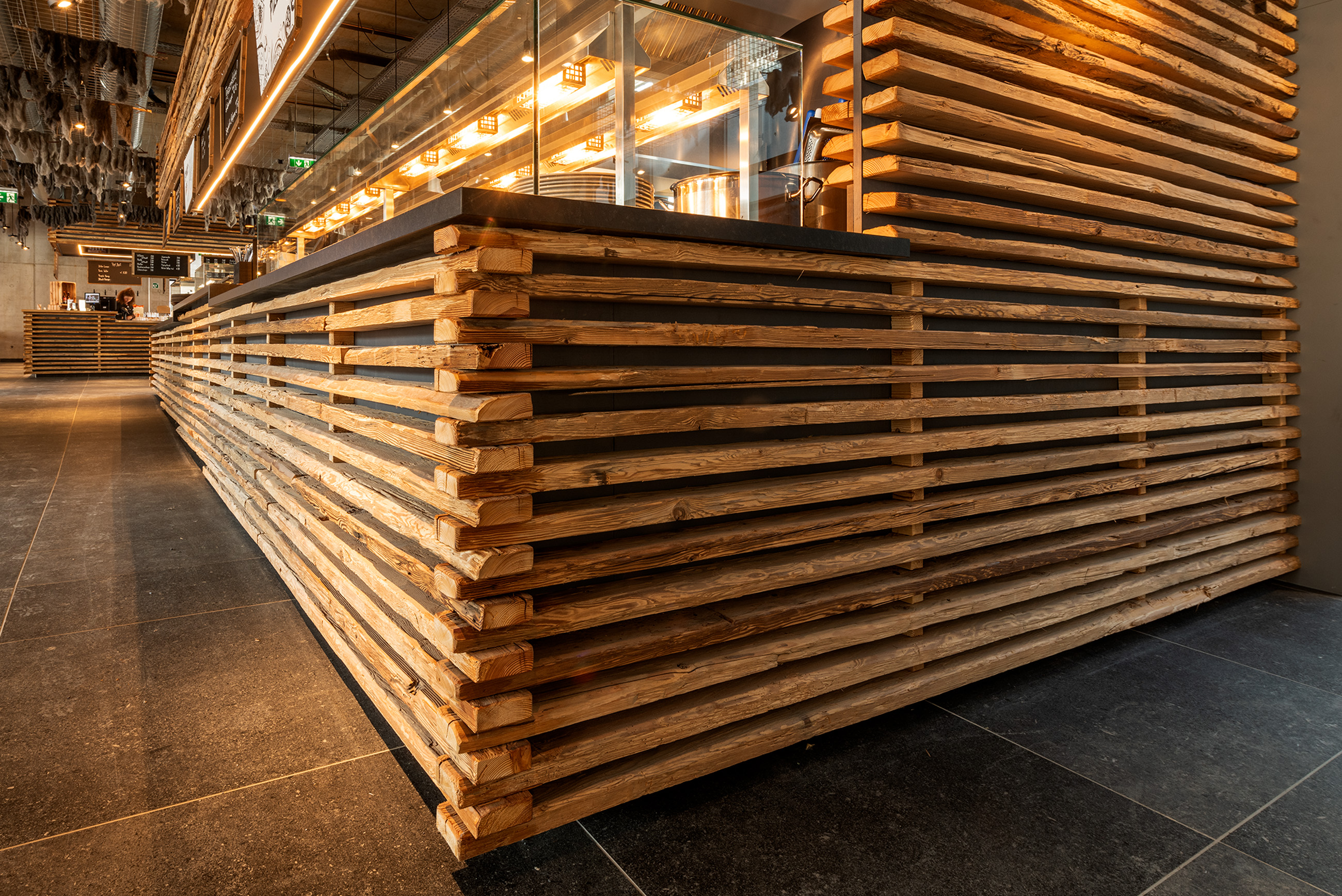
The number of different natural materials that can be used for building is finite. So we were delighted to find a new acoustic material in sheep's wool, which is even more sustainable than wool felt. The wool we sourced came from the Montafon stone sheep, a breed of still endangered sheep only to be found in the Montafon Valley. Sheep grazing on Alpine meadows in summer are an integral part of the typical local landscape. We found photographs of freshly washed sheep's wool hung over fences to dry, which inspired us to recreate such scenes in a manner that would provide good acoustics for the Market Hall
We sourced the wool directly from the producer, Biohof Mathies, which is based in the immediate vicinity of the Market Hall. After the sheep are sheared, this wool would normally be reprocessed to produce felt. It required very little reprocessing for our project, however; all it needed was to be washed and carded (combed). The open wool fibres with their high lanolin content not only improve spatial acoustics, but also filter pollutants out of the air, and have a regulating effect on humidity. So an ideal choice for us.
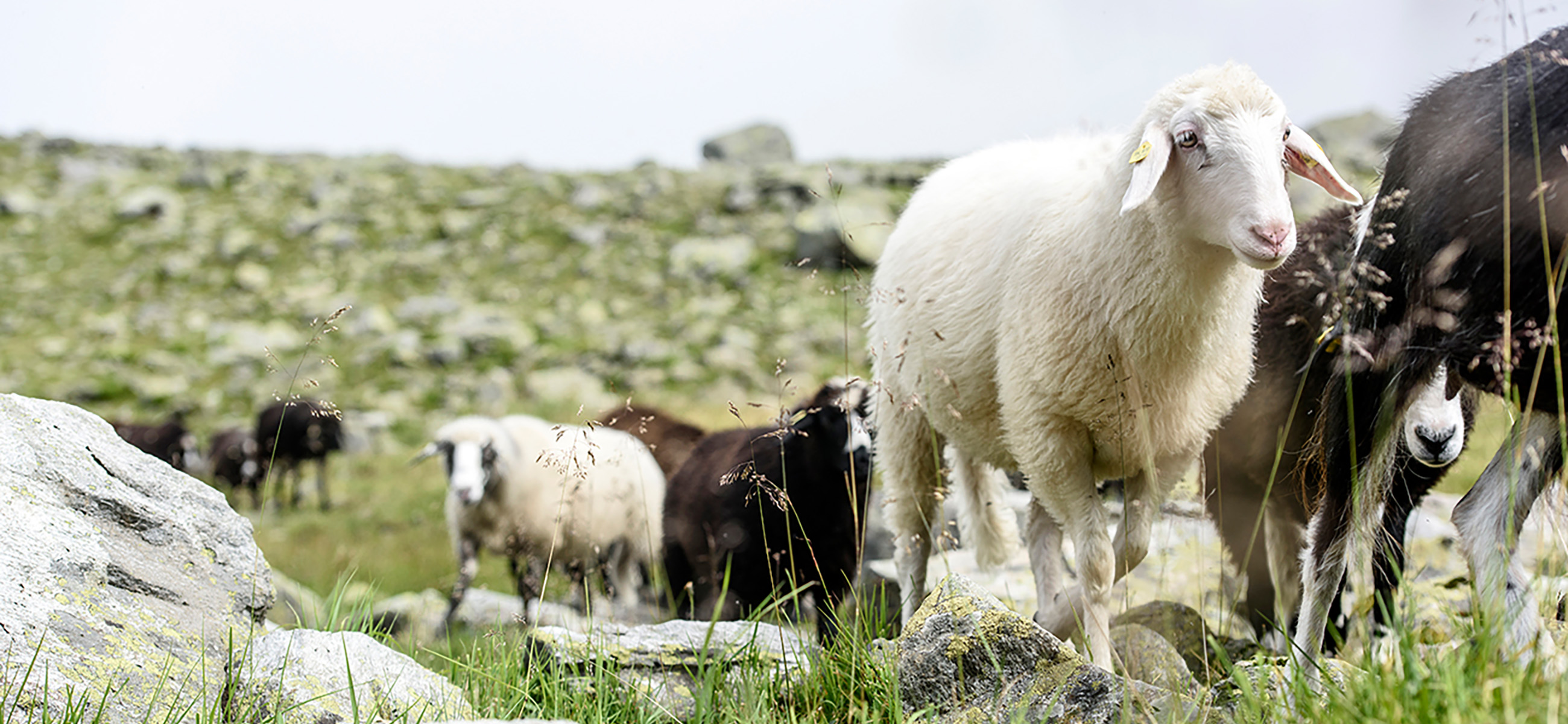


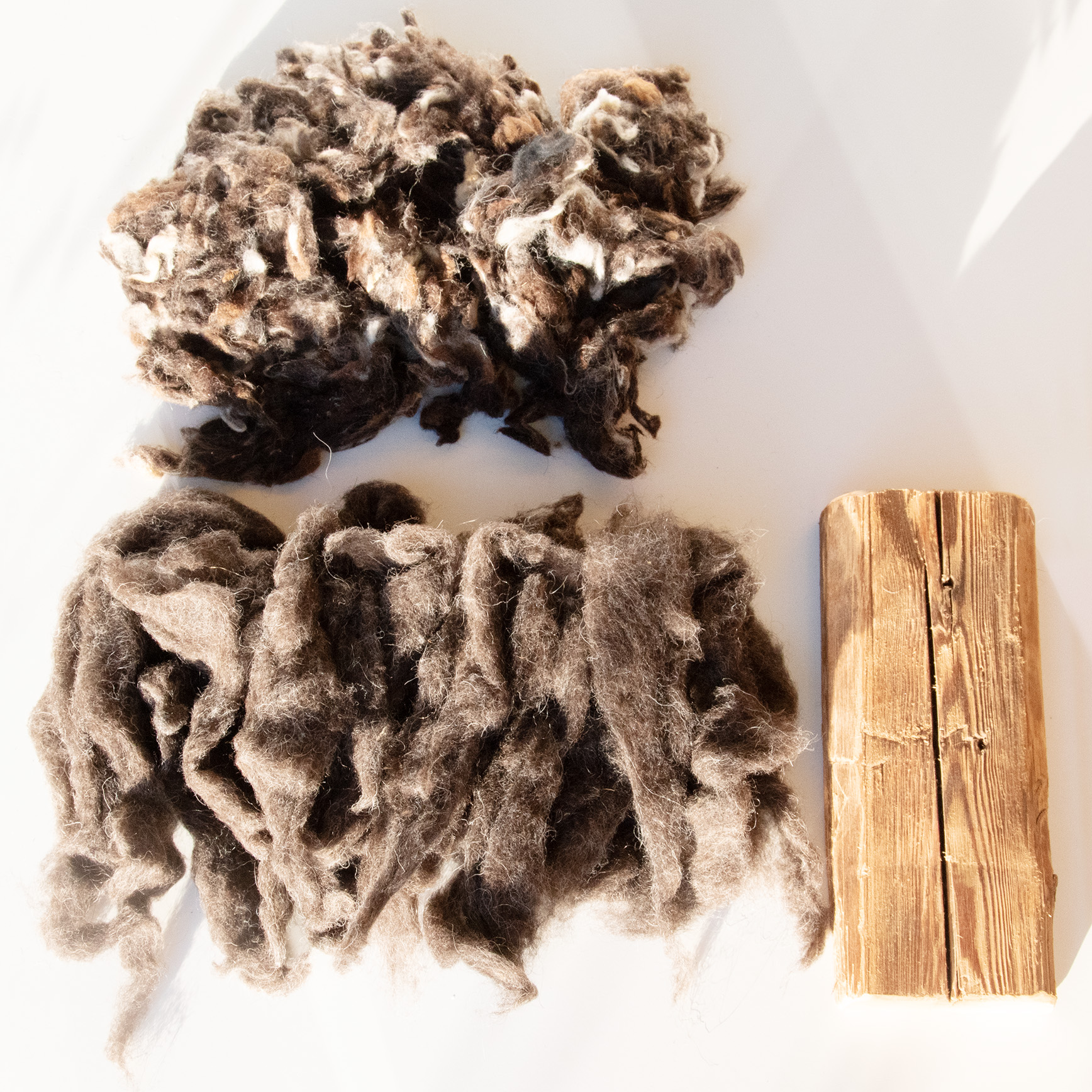
Using natural materials is a good start, but it only represents a small step on the road to sustainability. We are working to expand the range of sustainable materials we use, but we often encounter issues and problems. Does the material have to travel long distances to the construction site? How much energy is required for production and installation? Is the material really recyclable or does it become hazardous waste infiltrated with other substances, such as adhesives?
We now work more closely with producers than we did in the past to resolve these issues, which is very rewarding in many cases. However, we know that we still have a lot to do in order to achieve our goals, which is to create timeless, long-lasting buildings, which can be broken up into raw materials for new construction projects at the end of their lifecycles.